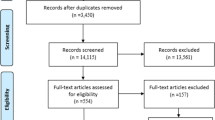Abstract
In our Department, doses of chemotherapy in obese cancer patients are routinely calculated according to actual body weight. As some physicians question this policy, we prospectively evaluated the safety of this approach. Of 606 consecutive patients, 178 (29%) were obese, defined as body mass index ≥27.3 kg/m2 for females and ≥27.8 kg/m2 for males; full-dose chemotherapy was initiated in 147 (24%). Severe chemotherapy-related toxicity (SCRT) (neutropenic fever, severe thrombocytopenia associated with significant bleeding and/or requiring platelet transfusion, or grade 3–4 nonhematologic toxicity other than alopecia, nausea, and vomiting) during the first three cycles was evaluated. SCRT was noted in 16/147 (11%) during the first cycle, 10/146 (7%) during the second cycle, and 6/142 (4%) during the third cycle. Drug doses were reduced due to toxicity in 15/146 (10%) during the second cycle and 11/142 (8%) during the third cycle. There were no treatment-related deaths. It was concluded that calculation of standard chemotherapy dose according to actual body weight in obese patients is relatively safe.
Similar content being viewed by others
References
Gurney H. Dose calculation of anticancer drugs: a review of the current practice and introduction of an alternative. J Clin Oncol 1996;14:2590–2611.
Du Bois D, Du Bois EF. A formula to estimate the approximate surface area if height and weight be known. Arch Intern Med 1916;17:863–871.
Powis G, Reece P, Ahmann DL, et al. Effect of body weight on the pharmacokinetics of cyclophosphamide in breast cancer patients. Cancer Chemother Pharmacol 1987;20:219–222.
Lind M, Margison JM, Cerny T, et al. Prolongation of ifosfamide elimination half-life in obese patients due to altered drug administration. Cancer Chemother Pharmacol 1989;25:139–142.
Rodvold KA, Rushing DA, Tewksbury DA. Doxodubicin clearance in obese. J Clin Oncol 1988;6:1321–1327.
Georgiadis MS, Steinberg SM, Hankins LA, et al. Obesity and therapy-related toxicity in patients treated for small-cell lung cancer. J. Natl Cancer Inst 1995;87:361–366.
Rosner GL, Hargis JB, Hollis DR, et al. Relationship between toxicity and obesity in women receiving adjuvant chemotherapy for breast cancer: Results from Cancer and Leukemia Group B Study 8541. J Clin Oncol 1996;14:3000–3008.
Fleming RA, Eldridge RM, Johnson CE, et al. Disposition of high-dose methotrexate in an obese cancer patient. Cancer 1991;68:1247–1250.
Williamson DF. Descriptive epidemiology of body weight and body weight change in US adults. Ann Intern Med 1993;119:646–649.
Calvert AH, Newell DR, Gumbrell LA, et al. Carboplatin dosage: evaluation of a simple formula based on renal function. J Clin Oncol 1989;7:1748–1756.
Cockroft DW, Gault MH. Prediction of creatinine clearance from serum creatinine. Nephron 1976;16:31–41.
Common Toxicity Criteria. In: Investigator’s Handbook. A manual for participants in clinical trials of investigational agents sponsored by the Division of Cancer Treatment, National Cancer Institute, NIH Publication 1993;92–2740.
Ozer H, Armitage JO, Bennett CL, et al, for the American Society of Clinical Oncology Growth Factors Expert Panel. 2000 Update of recommendations for the use of hematopoietic colony-stimulating factors: Evidence-based, clinical practice guidelines. J Clin Oncol 2000;18:3558–3585.
Gelman RS, Tormey DC, Betensky R, et al. Actual versus ideal weight in the calculation of surface area: effects on dose of 11 chemotherapy agents. Cancer Treat Rep 1987;71:907–911.
Author information
Authors and Affiliations
Corresponding author
Rights and permissions
About this article
Cite this article
Abdah-Bortnyak, R., Tsalic, M. & Haim, N. Actual body weight for determining doses of chemotherapy in obese cancer patients. Med Oncol 20, 363–367 (2003). https://doi.org/10.1385/MO:20:4:363
Received:
Accepted:
Issue Date:
DOI: https://doi.org/10.1385/MO:20:4:363




